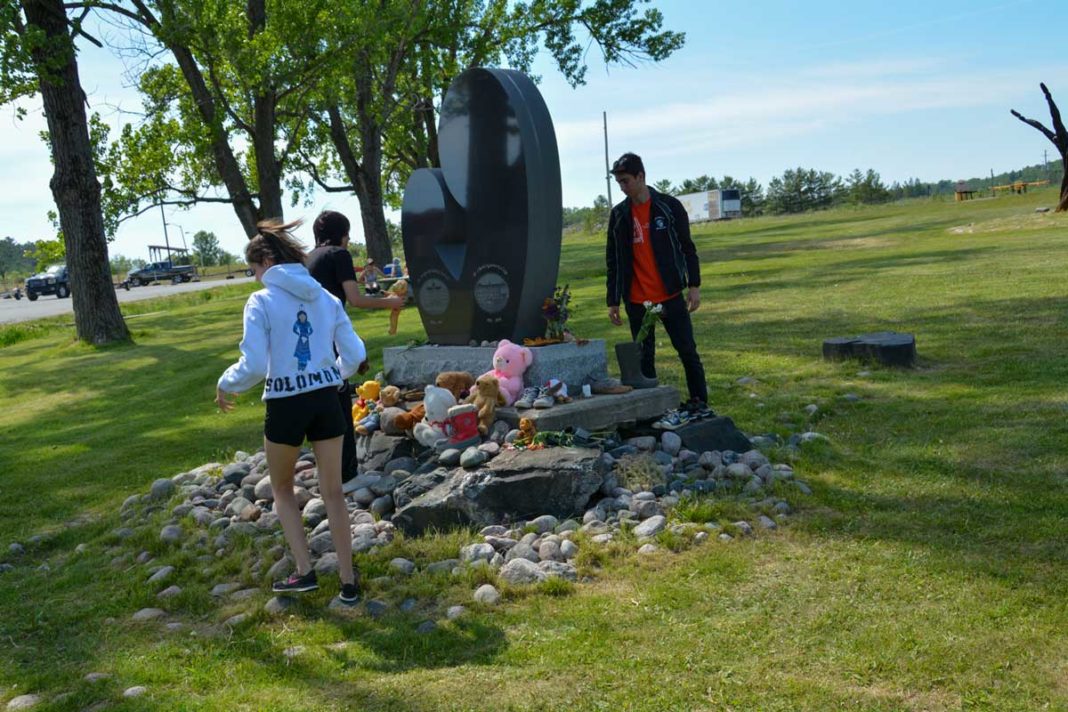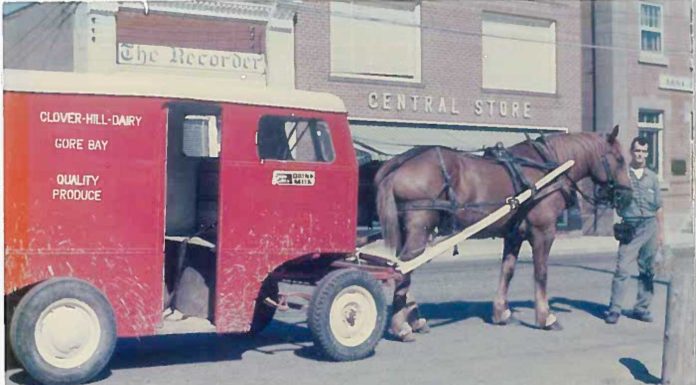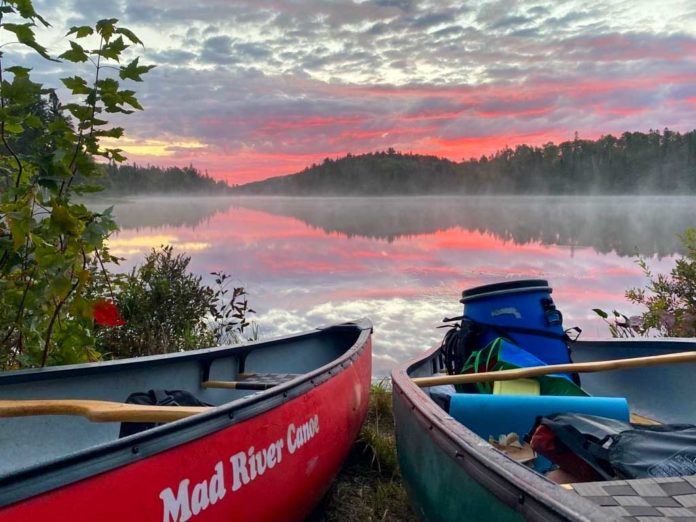SPANISH—Last Friday, The Expositor paid a trip to the town of Spanish and the sites of the boys’ and girls’ Indian residential schools that served much of Northern Ontario and beyond. They were called St. Peter Claver School for boys and, for girls, St. Joseph’s School for Girls. The associated high school there, operated as part of the boys’ school, was called Garner College.
The reporter was tasked to take pictures of any memorials left at the site of the old schools in light of the national discussion that has arisen after the discovery of the unmarked graves of 215 children at the site of a former Indian residential school near Kamloops, BC.
The girls school there was converted into apartments but fell victim to a tragic fire in the mid-1970s that claimed a number of lives. The dilapidated three-story shell of this building survives on Charles Garnier Drive, the street that also leads to the village’s marina.
The boys’ school, St. Peter Claver, was demolished in 2004.
There is a modern double-heart shaped, polished black marble memorial across from the former girls’ school dedicated in 2009 to all of the students who attended both boys’ and girls’ schools and the high school. The inscription on the rear of the monument, written by Mae Evelyn Smith (Buswa), class of 1961, reads, “Dreams flash across the minds of many, terrifying, satisfying, unrelenting, but dreams pass and we find peace at last.”
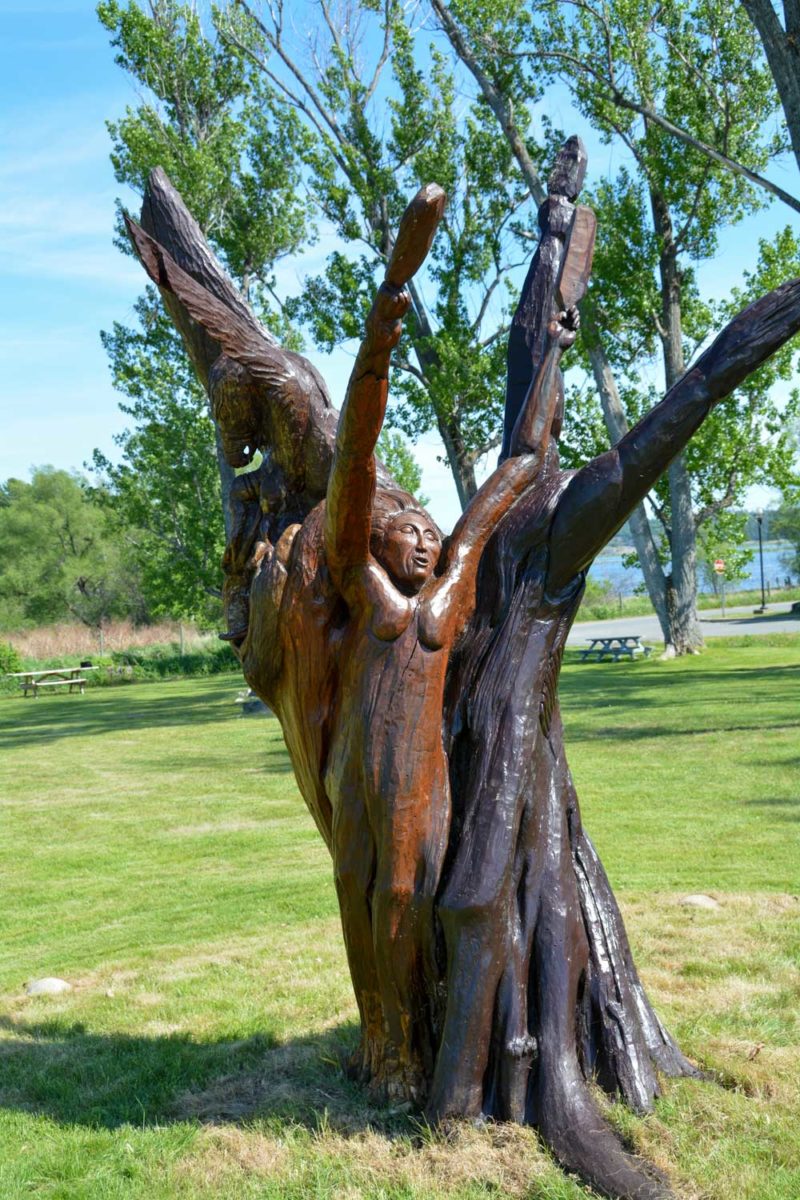
It was in this setting that The Expositor encountered a group of young people who arrived in two vehicles and then set about placing children’s shoes and stuffed toy animals around the base of the memorial sculpture.
They were quiet and respectful.
The only boy in the group of eight or so was Ryan Forcier who was sporting an Espanola High School track and field jacket. The Expositor learned that he is just completing Grade 12 and that he plans on studying mechatronics (an inter-disciplinary engineering technology program) at Cambrian College.
The paper also learned that he has lived his whole life on Lang Lake Road, just north of Whitefish Falls, and that he considers himself very fortunate to have had the privilege of living where he does. He is a keen and proud member of his school’s track team and admits to also being a car enthusiast.
Ryan was part of the small group of Espanola High School students who had come to pay respect that day to all of the children who had been compelled to leave their homes and attend schools like the ones that once stood near where the modern Spanish marina facility is today.
Ryan was there in support of his girlfriend, Acadia Solomon, who lives in the town of Massey, is of Indigenous ancestry and who, earlier that day had organized an information and support session at Massey’s main intersection that included her grandmother, Sagamok First Nation elders, some teachers from Espanola High School, friends from school and drummers.
Acadia, he explained, had told the people who gathered there earlier Friday afternoon, about the general issue and how it had affected her own family. Two of her great-grandmothers had been students at the girls’ school.
Others spoke about what a tragedy and trauma the residential school experience had been for First Nations communities across Canada and how that experience still ripples through Indigenous communities.
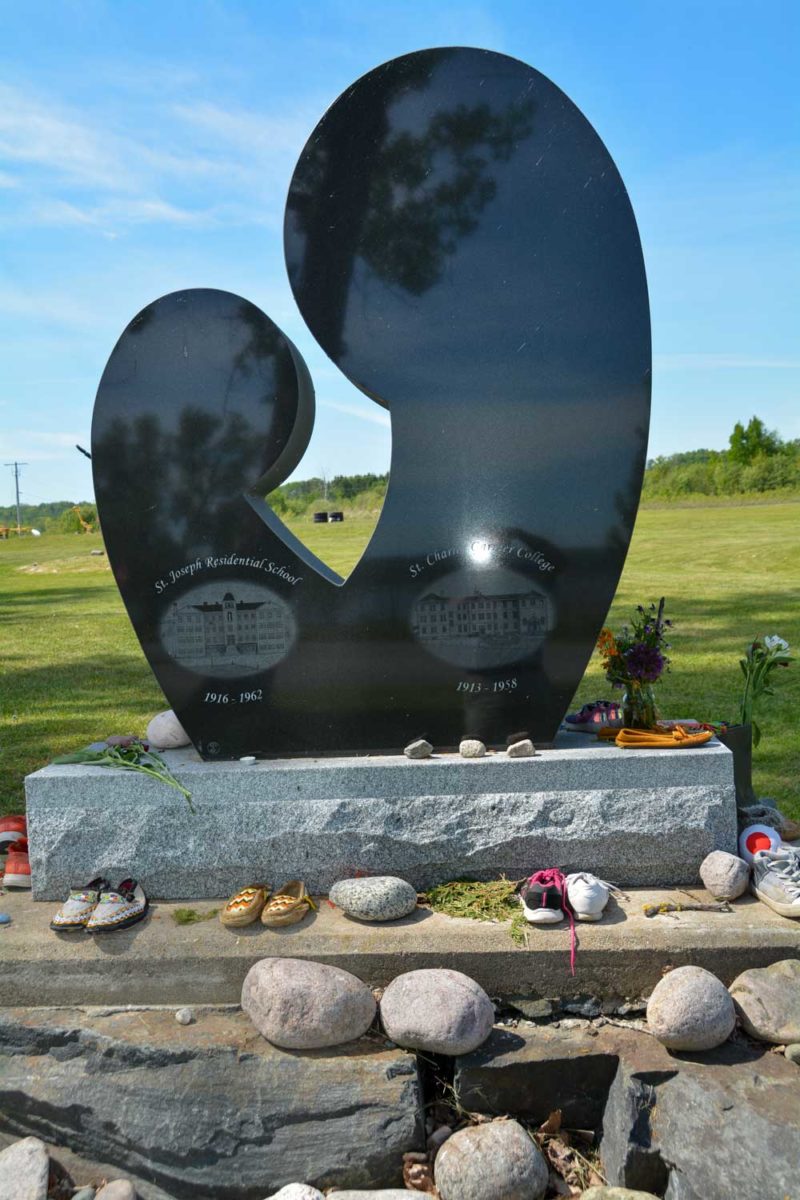
Ryan, who is of non-Native descent, stressed that it had been, “my girlfriend, Acadia, who organized the whole thing,” including the well-organized placing of the tributes at the Spanish memorial, “and I was just being the supportive boyfriend.”
But Ryan is a very thoughtful young man in his own right, The Expositor observed.
“Growing up, I had no idea what racism was until I met Acadia. This is the tip of the iceberg but I want to do my best to support all of the people that I can.”
In fact, although he was raised near Whitefish Falls and had attended school in Espanola, he told The Expositor that, “I had never known the residential schools in Spanish were as close as they were to us until I met Acadia.” Last Friday was his first visit to the site of the boys’ and girls’ schools, in fact.
“My girlfriend told me about residential schools (like the local ones). I wasn’t aware of that before. Now there is required teaching in the senior grades in elementary school and in high school about this chapter of Canadian history, but I understand how horrible it really was.”
He said that when they drove down Charles Garnier Drive towards the site, “I was expecting some kind of abandoned warehouse, maybe, but not this ruined building. We put some stuffed animals in there too (the ruined girls ‘ school) and I could feel Acadia’s pain.”
Ryan said that when he heard about the discovery of the graves at the Kamloops, BC school site, “I couldn’t believe it. I always try to see the world positively, but this took me aback.”
“Going forward,” he added, “we all need to remember these things. We need to work together to make things better for Native people and for everyone.”

